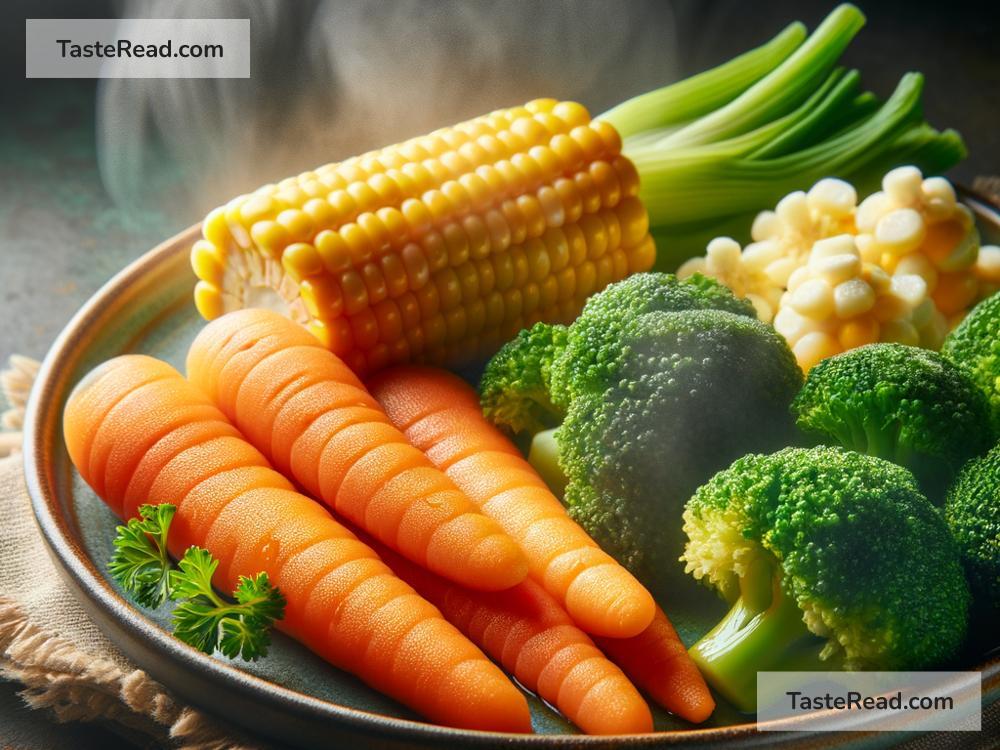Why Some Vegetables Taste Sweeter When Steamed
Have you ever noticed that vegetables like carrots, broccoli, or sweet potatoes taste sweeter after being steamed? It’s not just your imagination. Steaming can transform certain vegetables, revealing their natural sweetness and making them a tastier addition to your meals. In this blog, we’ll explore why this happens in simple terms and why steaming is such a great way to prepare veggies.
Understanding Vegetable Sweetness
Sweetness in vegetables comes from natural sugars. Most vegetables have small amounts of sugars stored inside them. These sugars are part of what makes vegetables enjoyable to eat, but they’re not always noticeable in their raw form. Sometimes, bitterness or toughness in raw vegetables can overshadow their natural sweetness. However, when you steam them, their sweet flavors often shine through.
Why Steaming Brings Out Sweetness
So, why does steaming make vegetables sweeter? It’s all about science and how heat changes the structure of the vegetables.
-
Breaking Down Starches
Many vegetables, such as carrots, sweet potatoes, and butternut squash, store energy as starch. Starch is a complex molecule made of sugar chains. When you steam vegetables, the heat breaks down these starches into simpler sugar molecules. That process releases natural sweetness, making the vegetables taste sweeter. -
Reducing Bitterness
Some vegetables, such as broccoli or cauliflower, have bitter compounds that can overpower their sweetness. Steaming helps break down these bitter compounds, softening their flavors and allowing their sweeter notes to stand out. -
Retaining Nutrients
Unlike boiling, steaming is a gentle cooking method that helps preserve the nutrients in vegetables. When vegetables are steamed, they maintain their natural flavors, including their sweetness. Boiling, by contrast, can cause nutrients and flavor compounds to leach into the water, making the veggies taste bland or less vibrant. -
Softening Texture
Steaming also changes the texture of vegetables, making them more tender. When vegetables are tender, their flavors seem richer and more balanced, which can enhance the perception of sweetness.
Steaming Versus Other Cooking Methods
Steam cooking is different from methods like roasting, frying, or boiling. Each cooking method interacts with vegetables differently, and steaming is one of the healthiest ways to cook.
- Boiling leaches flavor and nutrients into the water—this is why boiled vegetables often taste less sweet than steamed ones.
- Roasting caramelizes the surface of vegetables and brings out sweetness through browning, but it requires oil and higher heat.
- Frying adds extra fat, which can overpower the natural sweetness in vegetables.
Steaming strikes a balance because it uses only heat and water vapor to cook the veggies gently and evenly, preserving their taste, texture, and nutritional value.
Which Vegetables Taste Sweetest When Steamed?
Not all vegetables respond to steaming in the same way. Some naturally have more sugars and starches, making them especially sweet when steamed. Here are a few examples:
- Carrots: Carrots are well-known for their natural sweetness, and steaming enhances their sugar content by breaking down starch.
- Sweet Potatoes: Sweet potatoes are already sweet, but steaming makes their texture creamier and their flavor even more delightful.
- Broccoli: While broccoli can taste slightly bitter, steaming mellows out the bitterness and highlights its subtle sweetness.
- Cauliflower: Similar to broccoli, steaming makes cauliflower taste sweeter and milder.
- Peas: Fresh peas can taste sweeter when steamed because their sugars become more noticeable.
- Beets: Beets are famously sweet, and steaming preserves their natural sugary flavor.
Tips for Perfectly Steamed Vegetables
If you want to maximize the sweetness and flavor of your steamed veggies, here are some tips:
-
Don’t Oversteam
Overcooking vegetables can make them mushy and dull their natural flavors. Steam them just until tender and vibrant. -
Add Seasoning
A pinch of salt, a drizzle of olive oil, or a squeeze of lemon juice can bring out the sweetness even more. -
Use Fresh Vegetables
The fresher your vegetables, the better their flavor and sweetness will be. -
Use a Steamer Basket
A steamer basket keeps the vegetables out of the boiling water, allowing them to cook gently with steam rather than leaching their nutrients into the water.
Why Steamed Vegetables Are a Healthy Choice
Steaming vegetables isn’t just about taste—it’s also about nutrition. Steamed vegetables retain more vitamins and minerals compared to boiling or frying. Plus, steaming doesn’t require added oils, making it a low-calorie cooking method. When vegetables taste sweeter after steaming, you’re more likely to enjoy eating them, which is a win for your health!
Conclusion
Steaming vegetables is a fantastic way to bring out their natural sweetness while preserving their nutrients and flavor. Heat breaks down starches and bitterness, revealing the sugars that were always there. This simple cooking method transforms ordinary vegetables into delicious, tender bites. The next time you cook, try steaming your veggies and enjoy how their sweetness takes center stage. Your taste buds—and your body—will thank you!


